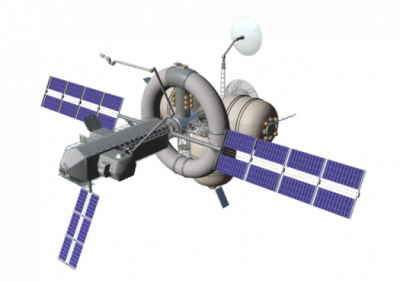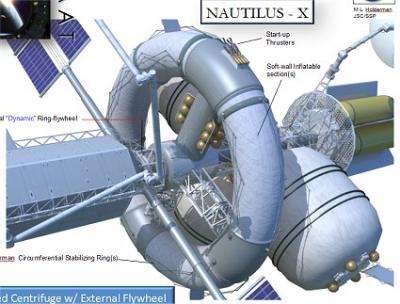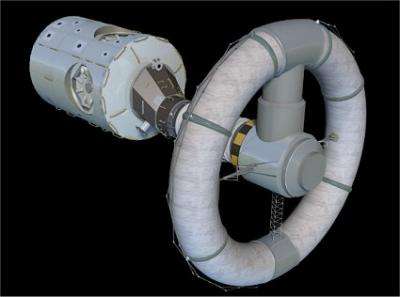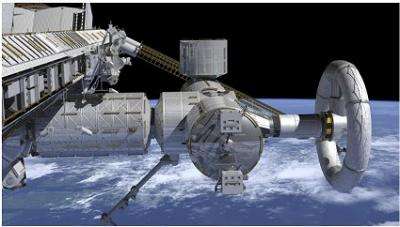February 15, 2011 weblog
NASA's Nautilus-X: Reusable deep manned spacecraft

(PhysOrg.com) -- NASA is currently examining several key technologies that can advance space exploration. Dubbed Nautilus-X this tubular spacecraft can be used as a reusable vehicle for lunar and deep-space missions, holding a crew of six with enough supplies for a two-year voyage.
Mark Holderman and Edward Henderson of NASA JSC listed six technology applications in their latest presentation to the” Future in Space Operations” group. The six technologies include: satellite servicing, ISRU on the Moon, a SBSP demo, solar electric propulsion vehicle, propellant depots, and the Multi-Mission Space Exploration Vehicle (MMSEV).
The Nautilus-X (Non-Atmospheric Universal Transport Intended for Lengthy United States eXploration) would be assembled from expandable structures, such as the inflatable living quarters proposed by Bigelow Aerospace. It would also contain a ring centrifuge to provide partial gravity, and radiation-mitigation systems that may also include tanks of water or liquid hydrogen slush, according to an article published on HobbySpace’s website.

HobbySpace also mentioned that the centrifuge includes both inflatable and deployed structures and may utilize Hoberman-Sphere expandable structures. The rotational hardware would be derived from Hughes 376 spin-stabilized ComSats.

Other views of the ISS centrifuge:
According to Edward Henderson of NASA’s Johnson Space Center the Nautilus-X will be designed as a multi-mission space exploration vehicle and could incorporate mission-specific propulsion units. In theory the engines and fuel can be swapped out depending on the mission. This all-purpose system would make it much simpler than using heavy-lift rockets for specific missions to the moon or other planets.
It’s estimated that construction would take at least five years and require two or three rocket launches and cost about $3.7 billion. By using existing technologies, like Bigelow's modules and the adaptability of a multi-purpose crew transporter, could mean a system like Nautilus can play a very important role in NASA's future.
More information: via HobbySpace
© 2010 PhysOrg.com



















